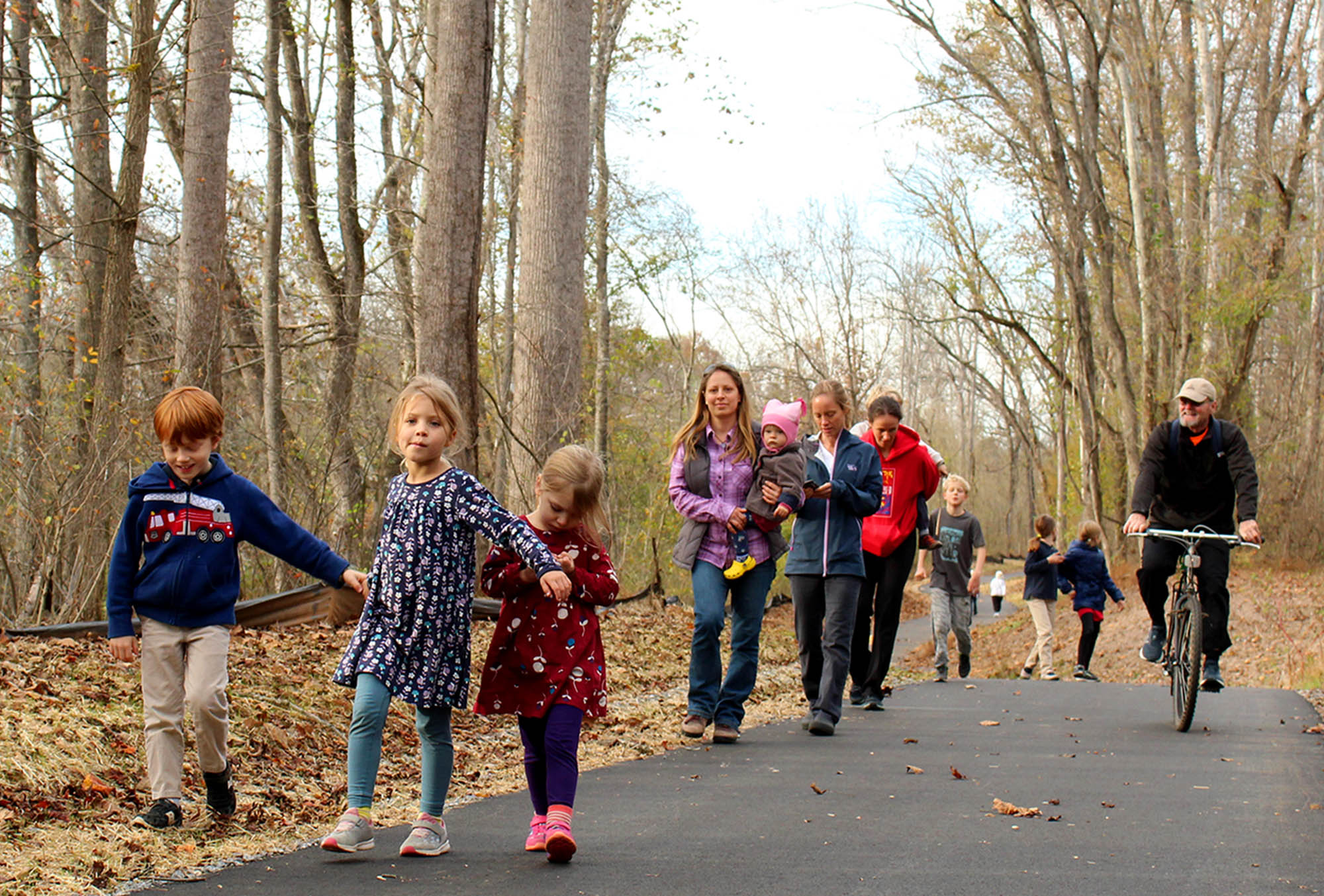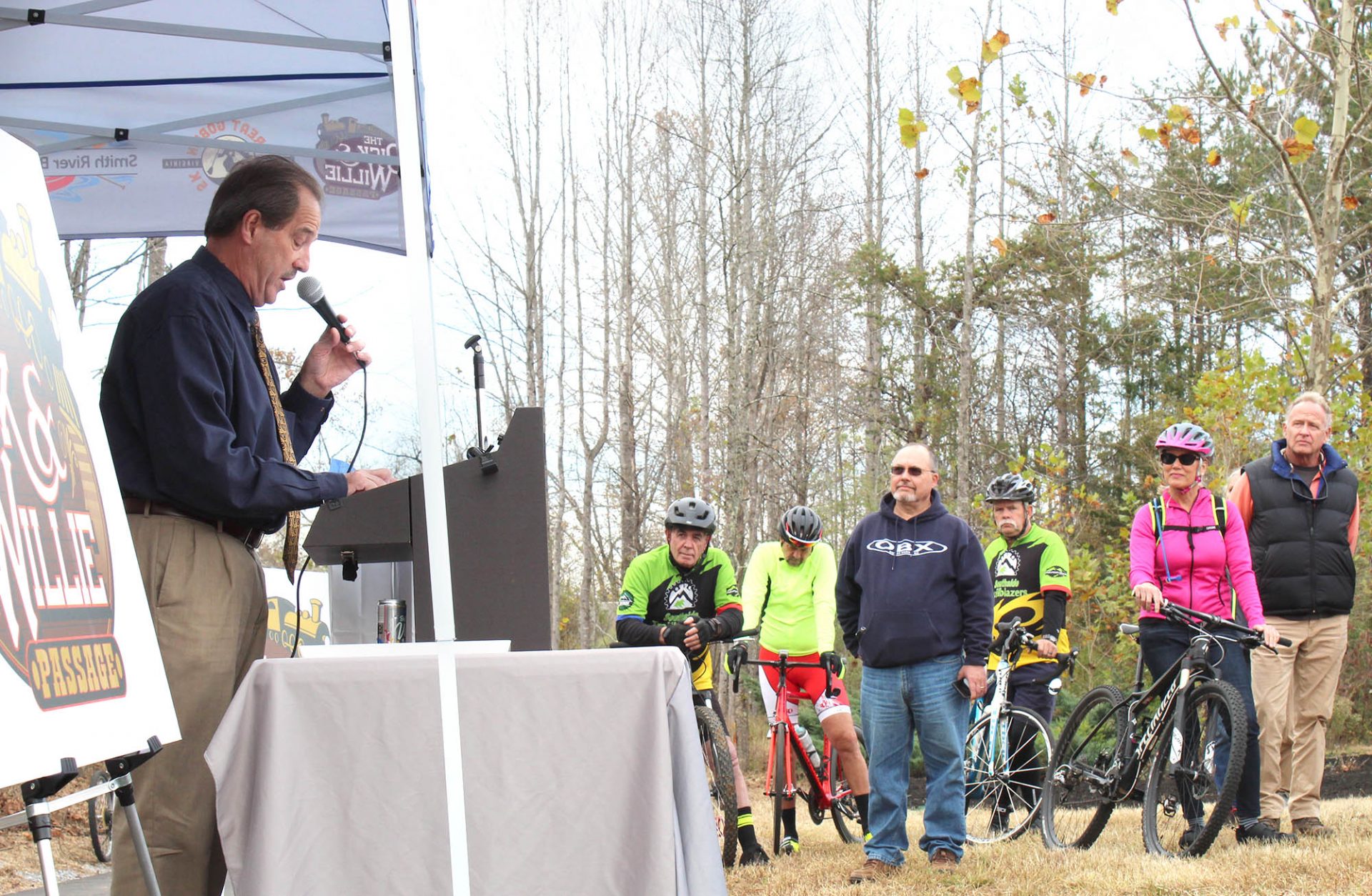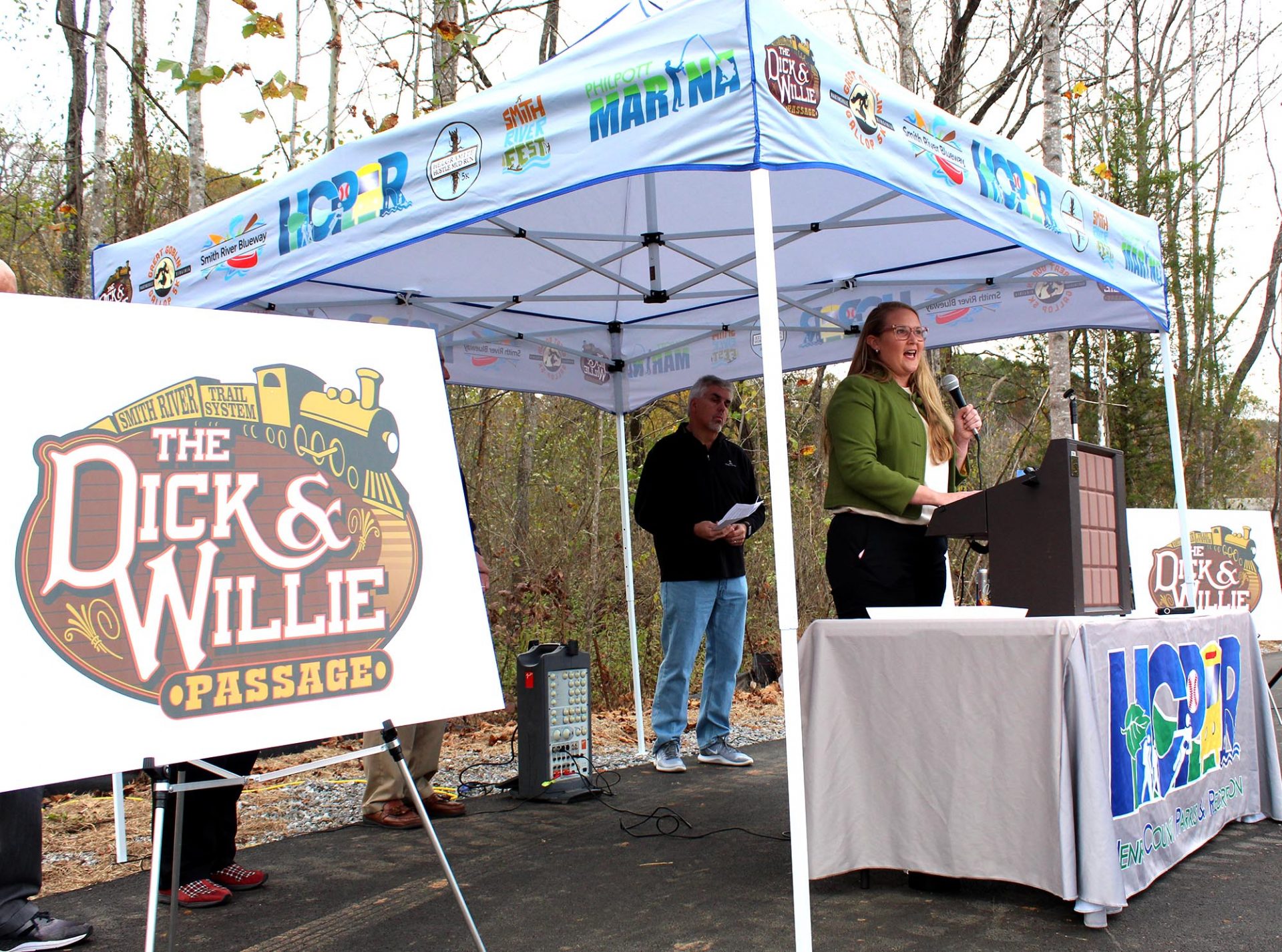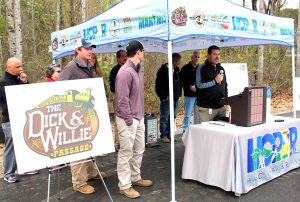
By Kim Barto Meeks
Staff Writer
The newest section of the Dick and Willie Passage Rail Trail has officially opened to runners, cyclists, and nature lovers after nearly two years in the making.
Flanked by bicycles on either side of the paved trail, officials gathered Monday afternoon at the Smith River Sports Complex to cut a ribbon signaling the opening of section 6B. The 2.5-mile route connects the sports complex to Spruce Street, where it ends with a trailhead near the city/county line that includes a paved parking lot and restrooms.

Henry County Administrator Tim Hall said the trail network is just one way the city and county are “literally and figuratively connected.” The two localities collaborate on many projects, and “this is just the latest and the prettiest,” he said.

Reflecting on setbacks along the way, Hall likened the process to a song by The Beatles, “Long and Winding Road.” At times, the goal seemed unattainable.
In December 2017, The Harvest Foundation awarded nearly $1.4 million in grant funding to Henry County to construct section 6B. Site work began in January 2018, and originally the nature trail was slated to open by the end of that year.
However, nature did not cooperate. Henry County Engineering Director Tim Pace said the original trail building contract included 270 days of work, he said, “and we had 263 weather delays.”
Most of the new trail meanders through the woods along the Smith River and Mulberry Creek, though one portion follows the existing road on Country Club Drive. The original route had to be changed after some residents objected to the trail being built behind their properties.

Now completed, Section 6B brings the local trail network a few miles closer to the ultimate goal of extending the Dick and Willie Passage to 10 continuous miles in one direction. Hall said this will open opportunities to host longer races and cycling events that will draw tourists to the area.
The first 4.5 miles of the Dick and Willie Passage were built in 2010, after the nonprofit Dan River Basin Association approached Henry County with the idea to turn part of a defunct Norfolk Southern rail line into a nature trail. This section starts at Virginia Avenue in Collinsville and stretches east through the city of Martinsville.
There is a gap of about 2.7 miles between the ending of the original trail at Mulberry Creek, and the newest section 6B. The next planned phase of construction will connect the two with a section called 6A.
Citing the weather delays that pushed back 6B’s completion, Hall said he could not give an estimate of when the project would be finished, but said, “We’re working on it. We’ve secured right-of-way, and the next step will be putting funding together and doing the design work.”

Grants from the Virginia Department of Transportation (VDOT) Transportation Alternatives Program and a required local match from the county will help fund construction.
When finished, the additional length will result in “increased trail use, the ability to hold a marathon and additional races, and increased use by the local community, improving overall health and quality of life,” according to DRBA’s 2019 Rivers and Trails Master Plan.
Speakers at the ribbon cutting hailed the trail’s benefits for local residents and visitors alike.
Jim Adams, Chairman of the Henry County Board of Supervisors, said he walked the new section on Sunday and called it “the most beautiful part of the trail.”
“Now multiple generations can enjoy the trail here for many, many years to come,” he said.

Martinsville Mayor Kathy Lawson recalled when the Dick and Willie Passage was first proposed, some naysayers questioned why money was being spent on the trail. Now, she said in her remarks, it is used by hundreds of people and drives tourism to the area.
Sarah Hodges, Tourism Director for Martinsville and Henry County, said offering more outdoor recreation activities “increases quality of life for local residents and enhances economic development efforts.”
Hodges cited statistics from the Virginia Tourism Corporation that in 2017, 10 percent of visitors to southern Virginia traveled for the primary purpose of outdoor recreation. While in the area to run a race, watch a soccer tournament, or fish the Smith River, tourists spend money in local restaurants, shops, and hotels, she said.




